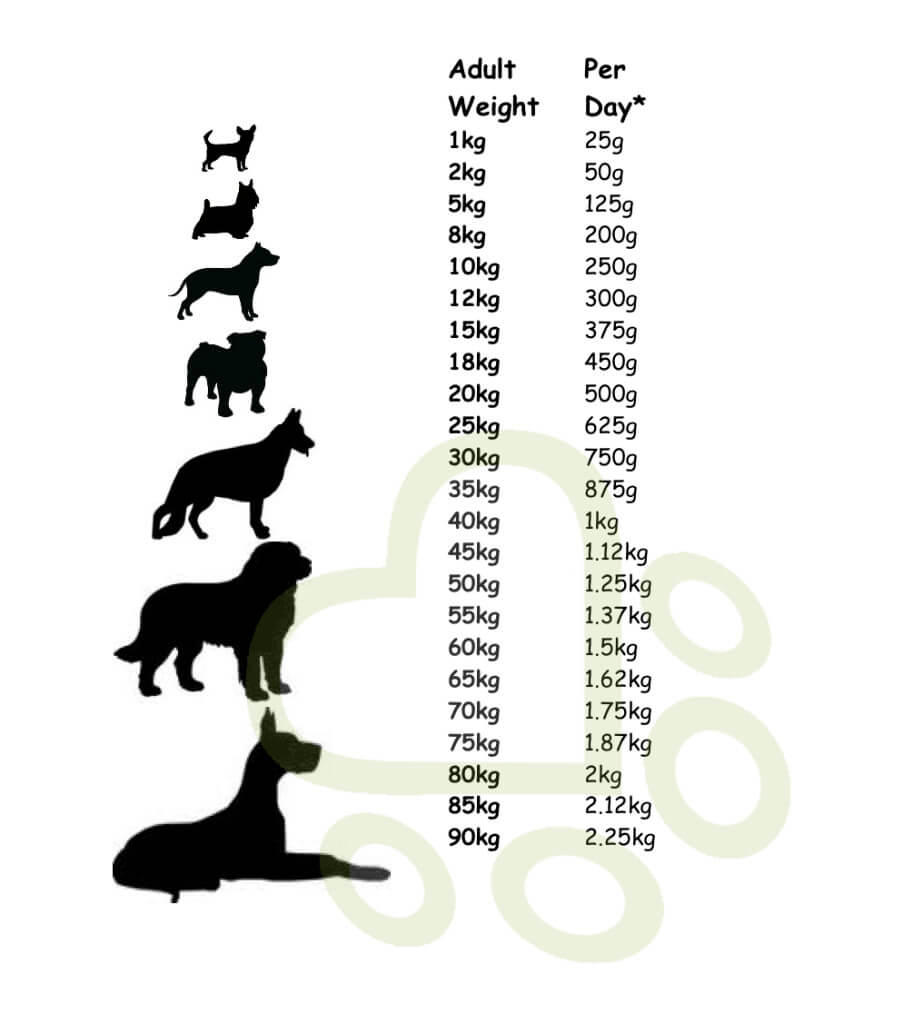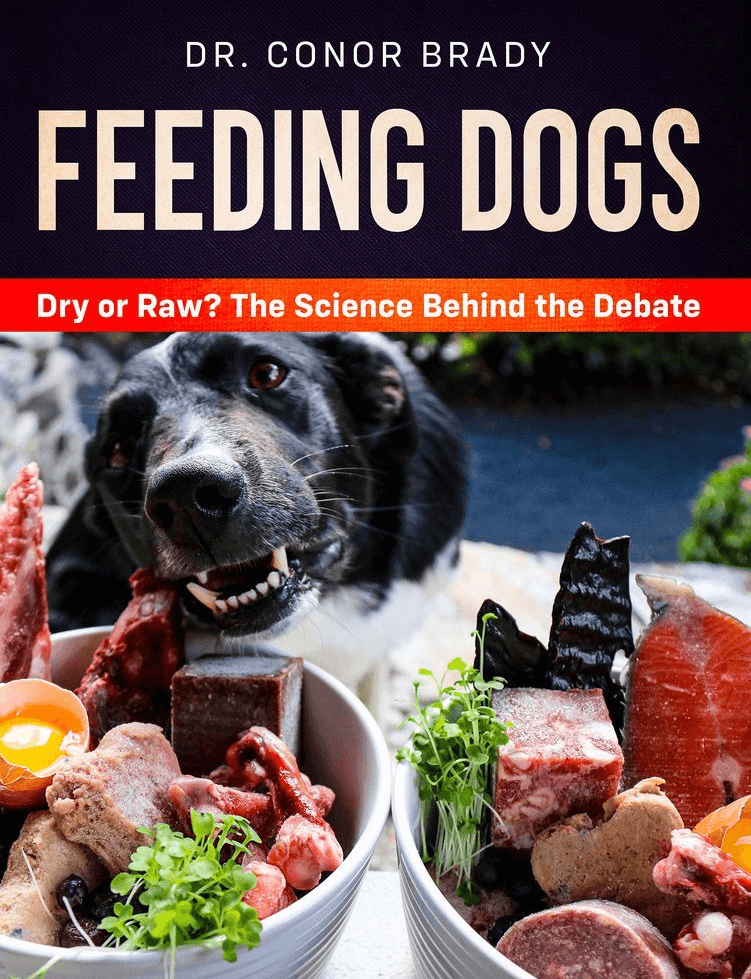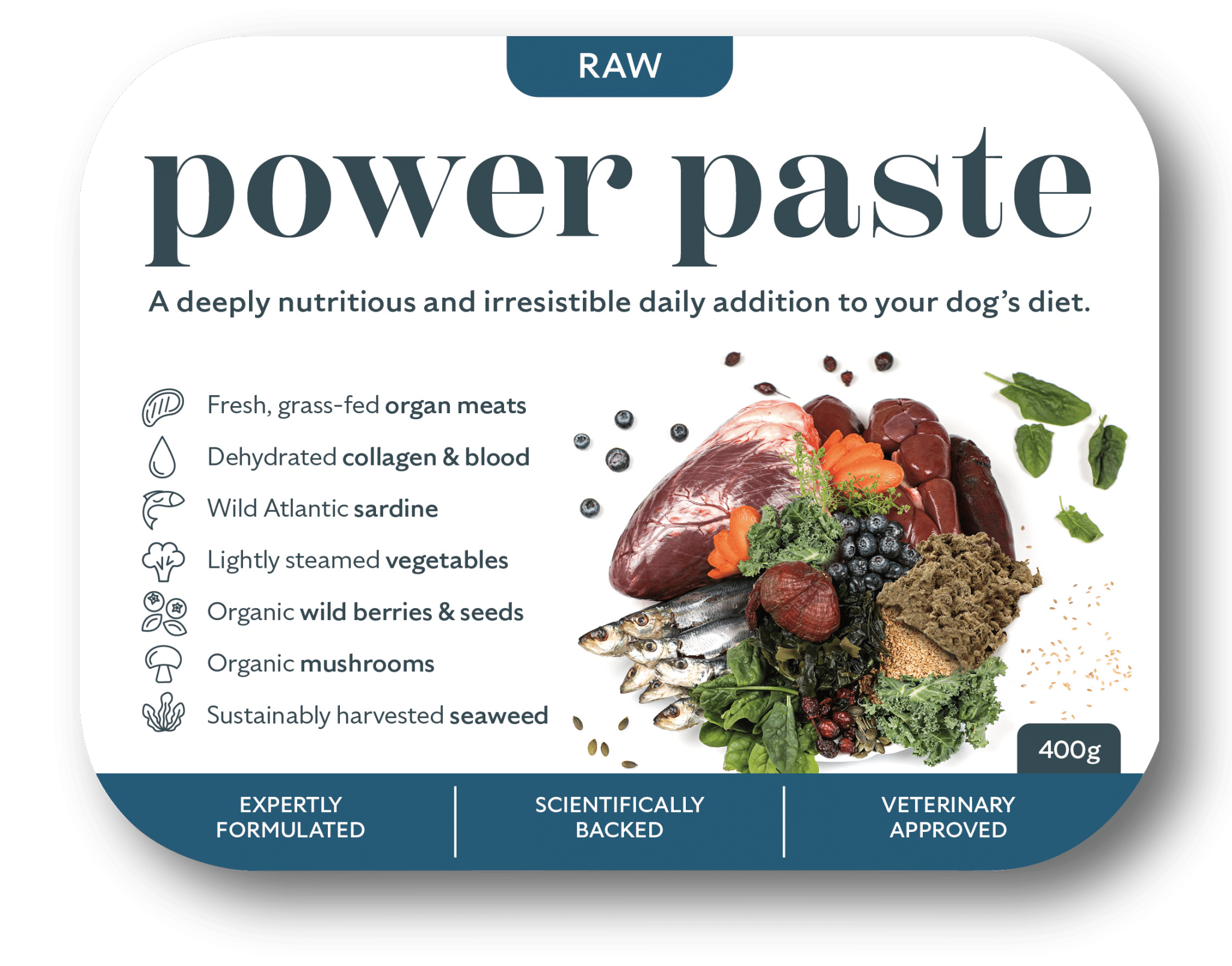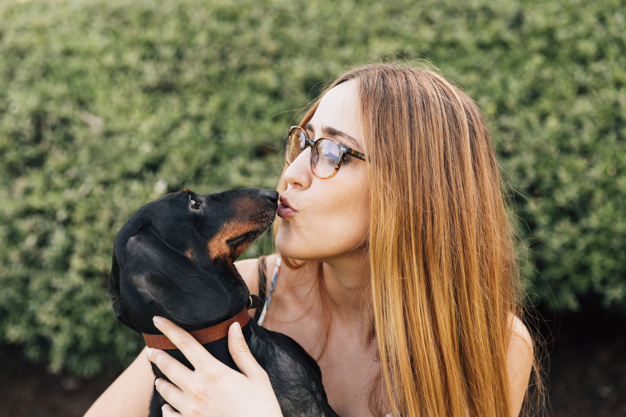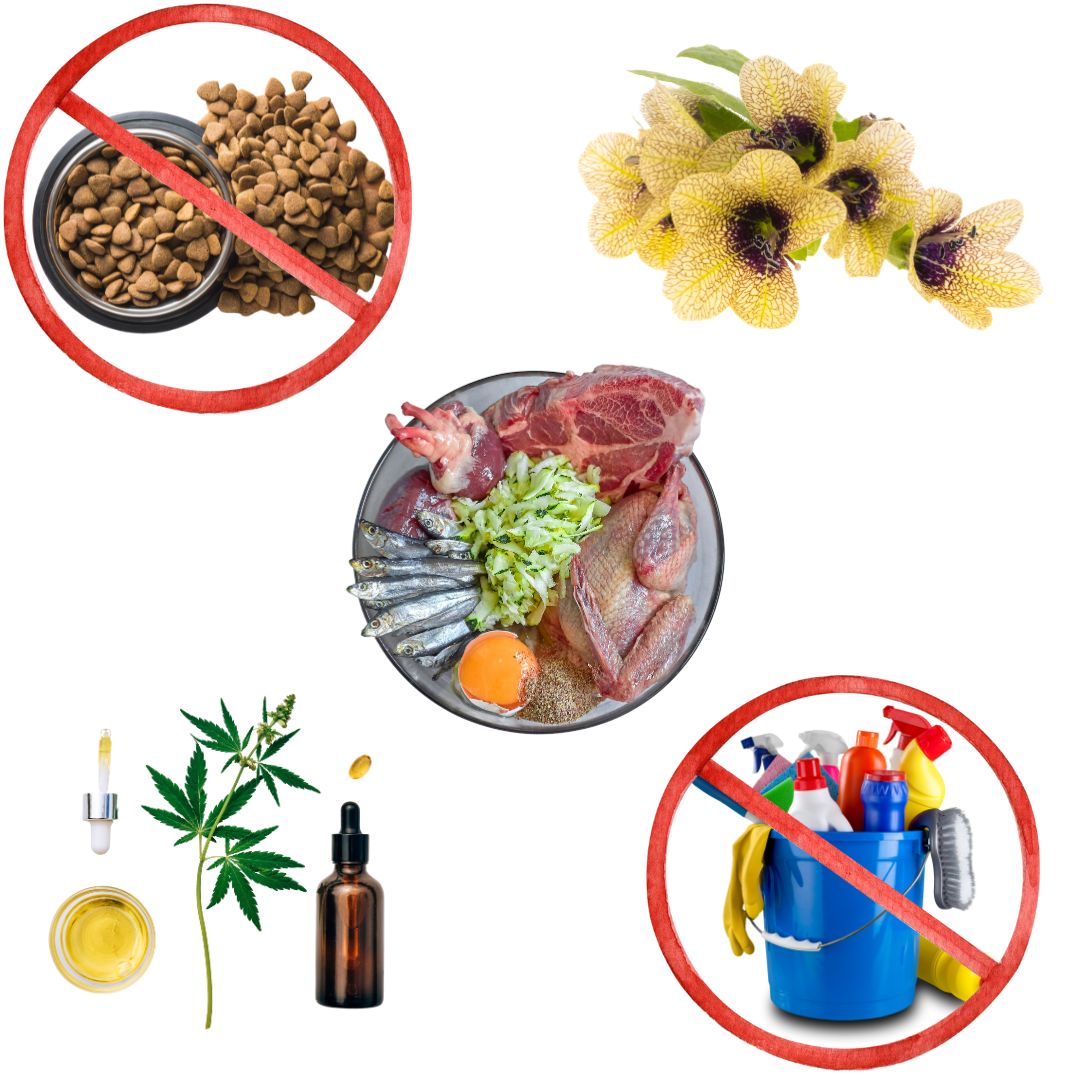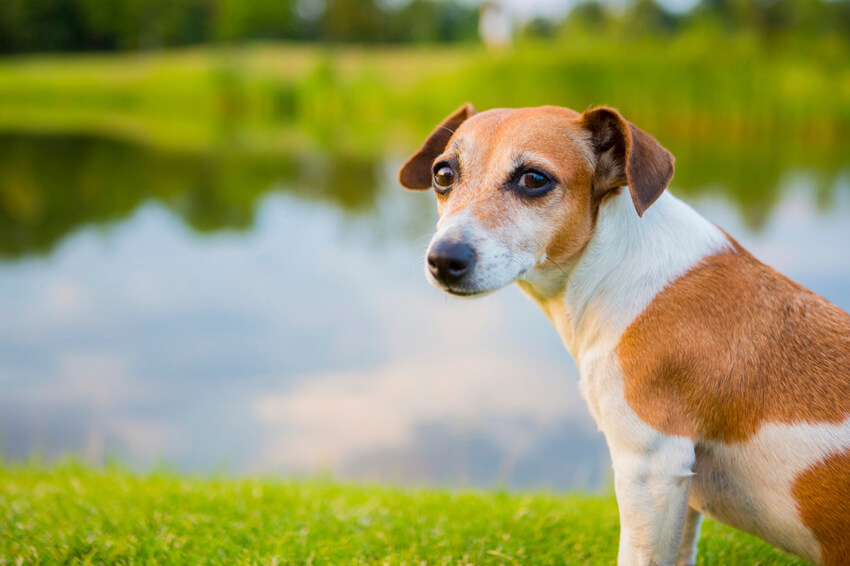Everything You Need To Know About Raw Dog Food In Ten Minutes…
Below is a short summary on ten key articles in raw feeding. Each article is linked out to the larger article should you fancy doing a little more research.
- What do dogs eat?
- What is raw dog food?
- The benefits of feeding raw dog food
- Cost of raw dog food
- What exactly to feed a dog
- Is raw food complete?
- Is raw dangerous?
- How much raw do they need per day?
- Introducing & storing raw dog food
1/10 What Do Dogs Eat?
We know that when left to their own devices and free of human influence dogs pursue a fresh meat and bone diet. They are scavenging carnivores, consuming a variety of small mammals, insects, birds, frogs and they love a bit of carcass. They’re not picky in this department.
Opinions vary on how much vegetation they include. Confusing arises from the fact that we humans can feed dogs fruit or vegetables as pups and they will seek out that material later in life. They target it as safe protein and then include it as part of their “normal” diet. However, house cats will do this too if introduced in this manner but we know feral cats do not touch plant matter. This implies that just because they can be convinced does not make it good for them.
That said, I do believe, based on a number of biological indicators, that dogs have historically consumed a little plant material.
For more on what dogs eat, I have a four-part video series on the matter. It’s a bit old now but they’ll do the job! The series of four videos highlights that the dog descended from a long line of meat eaters (wolves) and their closest kin, dingoes, the wild dogs of Australia, domestic dogs themselves not much more than 4,000 years ago, are total meat eaters. There are no plant eaters in the dog family tree. Most tellingly, every bit of canine biology verifies we are looking at a meat eater – from the mouth and teeth to their gut and physiology (such as zero requirement for plant carbohydrates at any stage of their life, a little telling that one).
Would you like to know more about “What do Dogs Eat?” then check out our online course that covers in detail all these topics. It comes with the complete first section of Conor’s #1 rated manual on canine nutrition, Feeding Dogs, as well as all the references you need to put your mind at ease.
2/10 What is Fresh / Raw Dog Food / BARF?
It’s called lots of things – raw dog food, fresh dog food, even BARF! The acronym BARF dog food was coined by an Australian vet, really the grandfather of raw, by the name of Ian Billingurst. It stands for Bones and Raw Food (but was later tweaked to Biologically Appropriate Raw Food). They are all based around the same principle and that is dogs are healthiest, most certainly happiest, when fed upon a fresh, species-appropriate diet, just like every other animal on the planet, from humans to farm animals to the animals in the zoo. It’s the very basis of good animal husbandry. In the dogs’ case it means a diet of raw, unprocessed, meat and bone. Studies are now starting to show that they are healthier when fed upon it…
That fresh is best is surely a moot point today…surely?!

3/10 The Benefits Of Feeding Raw Dog Food…
When a dog is changed from a dry dog food diet to a fresh, species appropriate diet, you can expect a number of physical changes to quickly occur.
The first physical change will be in their coat, where lots of fresh meat protein fuels a thick, lush coat.
Next, their physique will change. Could you imagine a human body builder bulking up on 50% bread to get that perfect body shape?! Of course not, and this issue is magnified for your little meat eater. Dogs fed raw meat and bone will shed the carbohydrate fuelled fat and replace it with muscle mass. They will be less inflamed as a result, they move and breath easier. They will live longer and cost you less in food and vet bills.
And this is only the beginning. Studies show that feeding a dog meat on the bone not only improves their dental hygiene but it is a very safe thing to do.
Furthermore, as it is so full of salt, dry food rots the kidneys of dogs and cats. Raw fed dogs will drink less, meaning they will pee less, and there will be less faeces as fresh food is so digestible!!!
Then there is the issue of behaviour. Dry food fuels poor behaviour and this is now being noted by the world’s top behaviourists (the top 3 culprits are 1) too much carbs / sugar, 2) all the chemicals and 3) a lack of mind-soothing nutrients
Sounds like a snake oil promise, doesn’t it? Well, check out the supportive studies in our much-shared and extensive article the top 5 benefits of feeding raw dog food to dogs, There’s a reason when people just try it, and see for themselves, they never, ever go back.
4/10 What Exactly Should We Feed Them?
Canine nutrition is a moving feast. So little is known as the focus to date has been what is the cheapest crap we can make for them and con their owners into buying. In short, feeding a dog is as easy as feeding yourself, just more meat! We know dogs are predominantly meat eaters. The best guess, at least where the rough consensus is among the top canine nutritionists is, is a diet of roughly 5:1:1:1. This is 5 parts fresh meat, 1 part fresh bone, 1 part fresh organ meat (liver, kidney, heart, spleen, whatever, but liver being the most important) and maybe 1 part blitzed vegetables (more on why you might veg to dogs here). The ratio can vary, up to 8:1:1 (this is more meat muscle and no veg, commonly called the Prey Model), but we find a little more organ meat and a little veg makes it even better for them.
Don’t be getting too hung up on these figures any more than you would in your own diet (how much dairy v meat v vegetables v fruit did you have last week?!). It’s just a guide. We go by this and vary up the meats and organs and veg as often as we can to avoid any nutritional discrepancies.
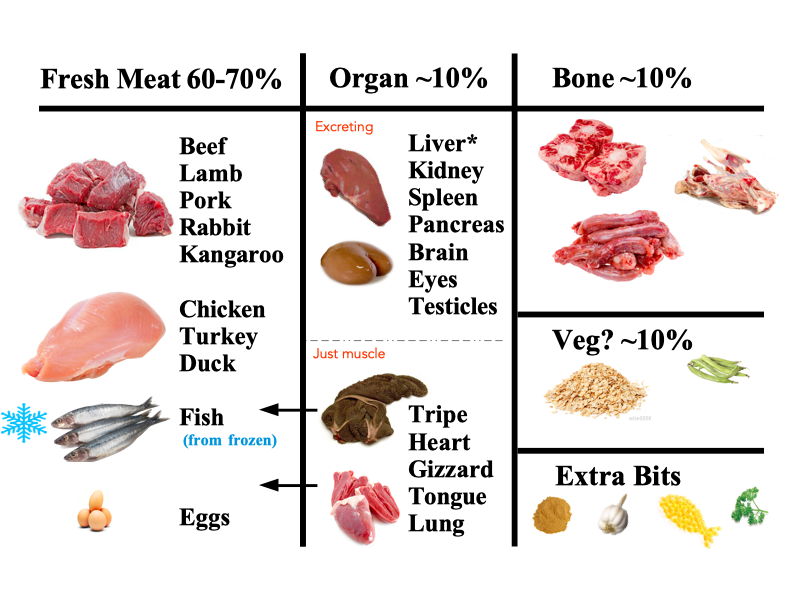
5/10 Making your own raw dog food
Having been inside the sector for a number of years I always recommend making your own raw dog food, that way you know exactly what they’re getting. And it’s by far the most cost effective way of doing things. If you’re going down this route here’s everything you need to know about making DIY dog food.
In short, you buy in all your meats, organs, a few plant additions if you like, chop them up where appropriate, mix them all up and then store it all in your freezer in lunchboxes. It’s that simple.
Need a few fancy recipes? No problem. Here are some great raw dog food recipes. It includes ideas for the standard dog, working types, fatties and puppies, and a list of foods NOT to feed to dogs.
Method 1: Mince with bone already in it
In short, you’re looking at two different ways of doing it. But there are a few different ways to go about it, depending on the type of meat you’re working with.
The three best targets for your meat needs are raw dog food manufacturers, butchers and supermarkets. They each have benefits.
Raw pet food manufacturers are handy for DIY’ers as they provide a good variety of plain meat minces with or without bone for just this purpose.
I participate in the onlineandlocal.co.uk scheme that enables me to promote raw dog food and get a chunk of each and every sale. We’re promoting Paleo Ridge. It’s ethical and organic and for no more than the other brands. If you’re in the UK, like my content and want good quality raw food for your pet, you can support me by buying some of your meat needs through my onlineandlocal shop link.
These minces are great for mixing, taking up less space in the freezer and are generally good value (they generally grind up various off cuts and “beef” them up with hearts or tripe or whatever. Perfectly fine). You buy in all your bits, mix in the tub they were delivered in, add the extras (veg, herbs, eggs, whatever) and pack into your lunchboxes (I put three days worth of food into each lunchbox so I know what they’re getting).

However you dog still needs his meaty bones for abrasion, which good manufacturers also supply (but are free from butchers, if you can find one killing his own animals) so pick up a few of these while you’re at it. Here’s a great article on feeding bones to dogs, best types for which dog etc. Feed these maybe twice a week to keep the teeth in great shape.


Method 2: Using meat on the bone
If you buy your meat local it’s usually on the bone. This way is great as you can not only see what you’re getting but your dog has a nice bit of texture to his meal. Your local butchers is a great resource. Buy your meat bits off him and then ask what’s going cheap or even in the bin. Supermarkets are great too. Get smart here, use those reduced-price meat sections. Find out when they get their chicken in and get in there the night before. You might find a half-priced box of chicken things, cheap fish, whatever! Remember it’s best before not bad after for your dog. They don’t suffer nasties like we do. They bury bones and dig them up a week later, they don’t suffer meat baddies like we omnivores do.
Trying to pack away mixes made with meat on the bone is a bit trickier, a bit bulkier, so folk tend to make up their dog’s bowls each night this way. I don’t always have this sort of time (for an animal that is decidedly less picky how it is presented, at least compared to my kid) but if you do go down this route, more power to you. You guys can really come up some meat feasts that are bordering on food porn. Why not.

6/10 Will my Raw Dog Food Mix be Complete?
There is no such thing as the word “complete”. The closest these companies ever came to making something like a complete food for humans was baby formula, and they failed. Are we to believe they achieved in dogs? Every analysis of there feed trials show they have not.
Virtually all pet foods contain unsubstantiated claims for safety, completeness and balance that no human food in the world would ever be able to
Dr. Elizabeth Hodgkins (2007), once Director of Technical Affairs at Hills Pet Nutrition
We haven’t a clue what a complete diet is for our kids. If I asked you how much calcium your child needs, would you know? Further, would you know what they actually absorbed last week? Of course you don’t.
The whole “complete” sell was a gimmick that exploited our never satiable need for laziness. It adds a layer of complexity to a simple, nutritionally bereft product. It convinces vets and owners alike that what’s inside the wrapper is all they need and finally it suggests that if one does not buy their product then they may be missing out on a vital component of nutrition. It’s all a gimmick.
Studies show 94% of UK’s “complete” canned pet foods and 61% of their “complete” dry pet foods failed to meet the minimum nutritional standards of AAFCO, depsite stating they did. Why? Because nobody is checking them. Nobody.
Sadly, raw dog food companies are now using this term too, despite not even conducting a food trial. So what we have now are companies, many of whom are simply meat producers who just discovered a profitable use of their carcass. Even so, I’m confident a dog will do better on the worst of the fresh meat mixes out there, than on some of the best of the dry food.
7/10 The Best Pre-Made Raw Dog Food
Ready-mixed meals are great to start off on. Everything is done for you so it’s not only convenient but you don’t have to worry if you’re doing right. This understandably comes at a slightly higher cost of making it yourself. A good pre-made raw dog food costs around £4-£5 per kilo, sometimes slightly more, many times less.
It’s important when selecting a pre-made that we don’t forget the lessons learned from the horrible dry pet food industry. Just because they’re on the right side of the nutritional debate does not make them the good guys. Where there is money to be made you will always get bandits and this is particularly true of the pet sector.
As an explainer of what the best pre-made might look like I’m going to give a plug for a range I developed for Paleo Ridge called Paleo Plus (pictured above). It was a no-holds barred effort at making the best pre-made pet food out there and it remains the only pet food I link my name to. Some of the stand out features of this range include
- Lots of lean meat. Dogs evolved on a lean meat diet and, like us, they are healthiest when lean themselves. Don’t waste your money on cheap, fatty filler.
- Ethical. All meats used are outdoor reared, free-to-roam etc. No animals were killed without prior stun
- Organic. Most of the meats used organic, meaning free from chemicals and generally better fed.
- Chopped chunky. There’s only one reason they pulverise their food into paste and that’s so you don’t see what you’re paying for.
- Single protein options. It’s best to try new dogs and those with gut issues on one animal protein at at a time just to test the waters.
- A greater array of organ meats. Organ meats to dogs are like green veg to humans. Paleo Plus uses a great spread to ensure your dog gets everything.
- Tweaked bone contents. Most raws (say they) use 10% bone in their mixes. However, not all bones are equal.
- Power additions. From the veg and fruit chosen (only wild blueberries, for example, as studies show they are highest in antioxidants), green-lipped mussel for manganese and joint lubrication and milled hempseed for added vitamin E and a sprinkle of seaweed as a nutrient boost, these little additions can make all the difference.
8/ 10 Is Raw Meat Not Dangerous for Them/Us?
The human food chain is tightly controlled, reducing the possibility of pathogens and parasites, but not eliminating them, that is why we need to cook it. Dogs as scavenging carnivores are not susceptible to meat pathogens, such as Salmonella and E.coli, in the same way that we are. Think of a dog that gets a nice meaty bone, eats half of it, then buries it and digs it up a week later for a chew. There are more things on that bone that could endanger their health than a piece of human grade meat from Tescos, yet they’re fine.
Their saliva is laced with lysozyme, making their mouth an extremely hostile environment for invading bacteria and they have stomach acids of pH 1 (more than ten times lower than ours). Like a wolf or cat, a dog is a raw-meat-eating machine. They need their meat fresh, as cooking destroys the good stuff. Having said that, raw-fed dogs can and do pass some of the pathogens in their faeces, but this has always been the case. Dogs actually house Salmonella in their intestines, this Salmonella is then shed in the faeces. Indeed both fresh and dry fed dogs are found to shed them in their faeces but, thankfully, it took until 2018 before the first (and still only) incidence of Salmonella poisoning in a raw-fed dog owner was reported. Sadly, the same cannot be said for dry food where 132 instances of Salmonella poisoning were reported in just 10 years from 2006-2016, half them toddlers under two years of age. What, nobody warned you?!
The bottom line is, fresh fruit and veg remain the top causes of Salmonella, E.coli AND Listeria in Americans, it’s not a reason to cut these vital foods out of your diet. It’s a reason to pick good foods, observe the basics of hygiene around the dogs feeding and toilet area, wash surfaces down after meal preparation and pick up stools. Job done.
9/10 How Much Raw Dog Food Do They Need?
An adult dog on the average fresh meat diet will eat 2.5% of their body weight per day. So, a 7kg adult Westie will require 175g of fresh dog food per day (1% of 7kg is 70g multiplied by 2.5). If the dog is a little heavy or a bit lazy? Then feed them a little less. Well exercised? Then feed them a little more! For a fairly accurate assessment of a dog’s needs, particularly pups (who need a lot more food), please check out our great dog food calculator.
10/10 Introducing and Storing Fresh / Raw Dog Food
When introducing raw food to a dog slowly – half a teaspoon one day, a full teaspoon the next etc. This serves two purposes. Firstly, as mentioned above, a dog on dry food will be unaccustomed to fresh meat. While the vast majority of dogs will not be phased, if you put a load of it in their bowl they may not approach it. Also, the slow introduction tunes the gut to the new diet.
Now there is handling and feeding of fresh meat. Most of the fresh meat will reside in the freezer, and a small bit will be in a tub on the bottom shelf of the fridge, so the daily meals can be fed from it. Make sure to wipe down all surfaces and utensils with anti-bacterial after use.



